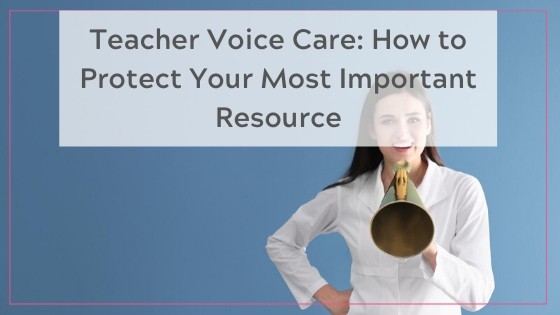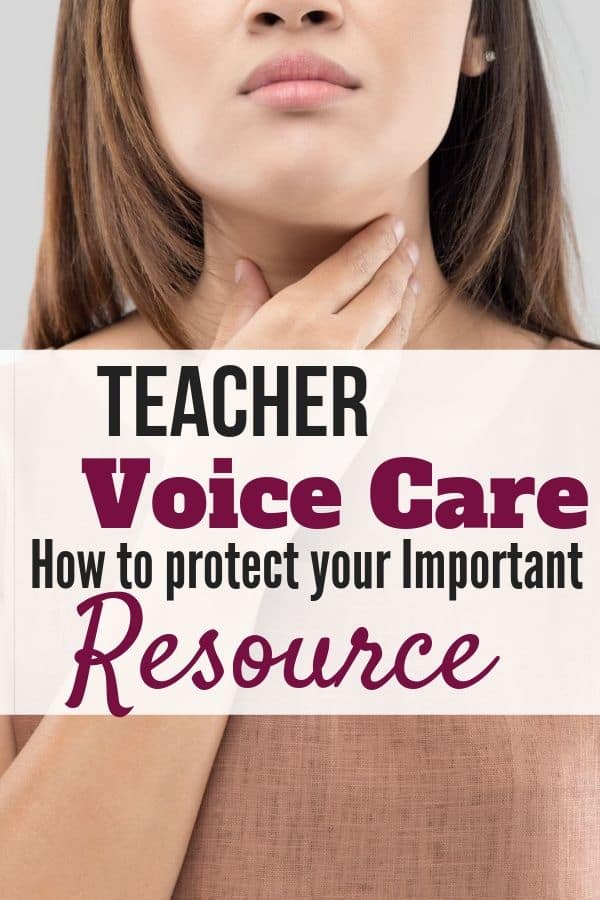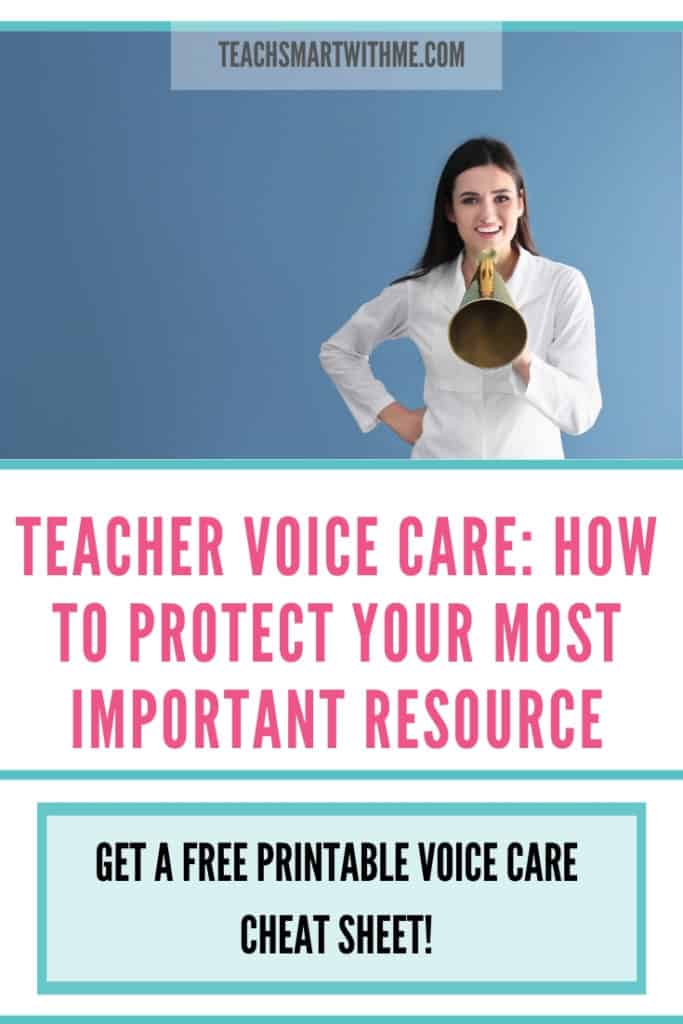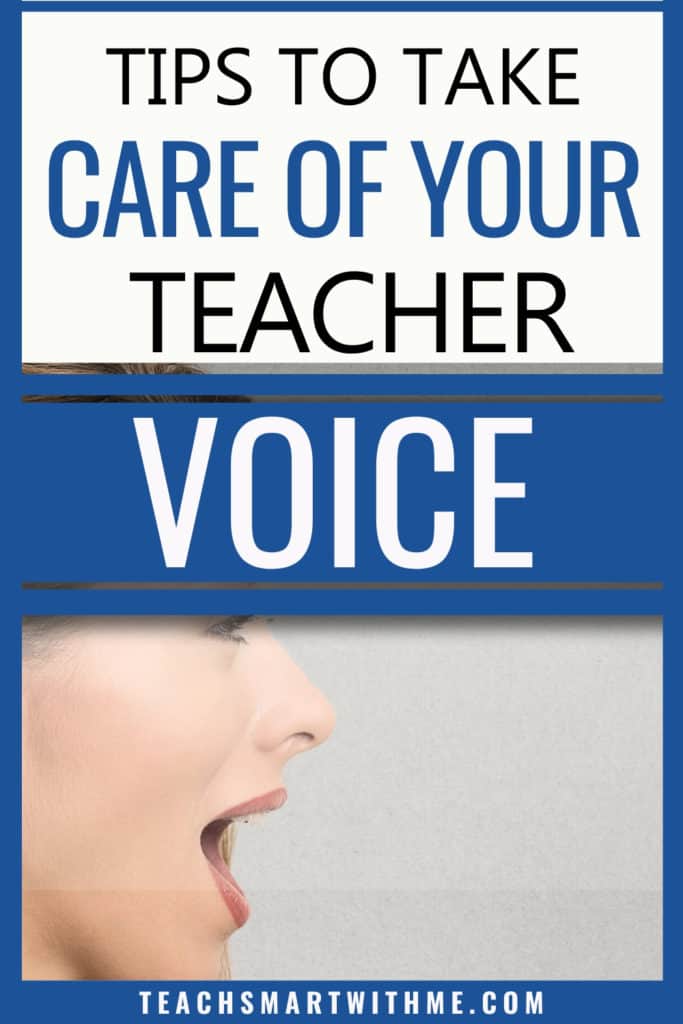Inside: As professional voice users, teachers often push their voice to the limits. Read this article for details about some practical strategies for teacher voice care.

“Girls and boys please follow my instructions carefully.“
I had repeated this phrase countless times to my class that day and my voice sounded more and more like the gravelly tones of Bonnie Tyler’s than my own.
I had been talking incessantly all day. Setting up routines and classroom procedures. It was Monday of day one, term one…..I only had 40 more weeks of talking to go!
Arghhh!!! I desperately needed to learn teacher voice care!
Are you worn out by talking all day?
Teaching is a profession categorized as professional voice users.
When you think about it, it’s not surprising. I’d just not thought of it like that. We’re really like vocalists, so it’s surprising that we’re never really taught how to take care of our voice.
Have you? I know I haven’t.
We talk to children all day. Outline instructions, repeating things over and over.
Then, we sometimes have to turn around and speak for several hours to parents at the interview nights.
Later, to our own families.
You know what I’m talking about? HaHa! no pun intended!
This could be 8-10 hours of voice use with sometimes excessive background noise, and no training to protect our most important resource.
Well, I want to change that!
My daughter is a professional talker too. She’s an actor, so she’s always known about ways to protect her own voice with warmups and voice exercises. It’s actually quite funny listening to an actor prepare their voice ready to go on stage 🙂
She’s the one that has suggested to me that I should be doing exercises to take care of my voice.
But I didn’t know what to do.
I thought I’d do some research on what we need to do, as teachers to protect our voices.
Tips for Teacher Voice Care
The first site I read about teacher-voice-care was from the Victorian Education Department. They have a fact sheet called Voice Care Guidelines.
An interesting read.
Well, if I’m honest, I only looked at the first few pages It’s 24 pages long!!
It did talk about breathing exercises, use of the pitch of our voice and other things, but I’m a little impatient and busy like we all are.
I needed something quicker and more straightforward. Maybe a one-page cheat sheet I could print out. I’m sure you do too!
So I kept looking.
Google help me!!
Next, I found an article from Teach Starter called: How to Stop Losing Your Voice as a teacher.
It had some great voice-care tips too. Things such as:
- taking rest breaks for your voice
- staying hydrated
- avoiding vocal extremes (I know this one calling out to students on the playground)
- learning to project your voice
- Using a personal amplification device
- Use of non-verbal attention grabbers (great idea!)
- Avoid throat clearing. This one had me intrigued.
Still no easy printable.
I really wanted to know more.
Then I found an insurance company site called NEA Members Benefits had some similar voice-care tips in an article called 5 Ways to Protect Your Voice in the Classroom.
This post repeated much of the great points I have already mentioned about voice care.
But, my search took me to YouTube. Yay! Thank you, Youtube – some helpful videos I could use.
Voice Care for Teachers Solved
This is where I found the easiest and most practical information on teacher voice care, in a 3 part series from a speech pathologist at Voice Science.
This very delightful lady called Sarah is the chief speech pathologist for Voice Science in Australia and is also an opera singer!
She guides teachers to have a more “flexible and durable voice to help last them for their whole career.”
I learned so much from her short video series about Voice Care for Teachers and I thought I’ve summarised her easy strategies here:
Get the FREE printable cheat sheet, especially for busy teachers here:
N.B. also see below to watch her YouTube video series.
Easy ways to protect your voice
1. Daily Vocal Warm-ups
Sarah explains that it is “critical for teachers, as professional voice users, to have the tools and the facilities to warm up their instrument.”
She believes that it is important that our voices are ready, flexible and warmed up before the day begins.
Whoops! I haven’t been doing this before.
The warm-up she uses and demonstrates is called ‘lip-trills’, which includes the much needed correct posture to support healthy voicing.
Lip trills involve the vibration of sound through your lips.
Check out the videos below to see how they are done.
I think I might need some practice with these though – I haven’t vibrated my lips together and hummed since I was probably a toddler! HaHa! 🙂
2. Daily Hydration
According to Sarah, vocal fatigue is exacerbated by dehydration. Think about how much water you are drinking throughout the day.
Ensure you are getting your daily water needs. This could be in the form of regular cool water, herbal teas or wine! (Sorry, I’m lying about the wine. It would be good though!)
For optimal voice operation, Sarah recommends around 2.5 litres of water per day.
Things to avoid when using your voice:
- Avoid throat clearing. According to Sarah, this is a No-No! Throat clearing can be very abrasive to your voice and can cause a vocal disorder. It will also have an impact on voice quality and if it is done often, it might be the reason you might be experiencing voice roughness or hoarseness. Instead, take small sips of water or do a firm swallow.
- Avoid Whispering. When experiencing tiredness of your voice, don’t whisper. Whispering has been found to increase voice fatigue. Instead, use less volume when projecting your voice.
- Avoid talking when you are sick. When you are sick with the flu, a sore throat or a chest infection, the best thing you can do for your voice is to stay at home. If you continue to work your voice when you are sick, it causes vocal damage and can prolong your vocal recovery.
- Avoid using an inflamed throat. You will be susceptible to voice wear, tear and strain if you use an inflamed throat.
- Avoid menthol throat lozenges. Menthol is known to have a dehydrating effect on your voice.
I hope you have enjoyed these tips for voice care. Please take these steps to help minimize the overuse and sometimes gravelly tones of the ‘Bonnie Tyler voice’ we all get as professional voice users.
***For all of this information, plus tips for Daily Vocal Warmups & all of the Myths about voice protection, stamina & durability of our voices, get the FREE Voice Care Secrets for Teachers printable here:
Voice Care for Teachers YouTube series:
No. 1:
This video discusses the myth about throat clearing! (Watch time: approx. 4 mins)
No. 2:
This video discusses the core myths about things you can do to assist your voice when you are unwell. Sarah also shares the requirements of voice care such as water use and better ways to clear the airways other than coughing. (Watch time: approx 8 mins)
No. 3
In this video, Sarah discusses the practice of daily vocal warm-ups. She demonstrates a strategy called lip trills – ascending and descending to help keep our voice flexible and warmed up (Watch time: approx. 4 mins)
I give clear instructions and a summary of her helpful tips in the FREE printable Information guide you can download here:
PIN FOR LATER!



Remember you are worth it!
Michelle xx


Leave a Reply